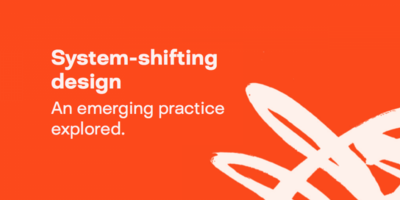Navetas

Securing £900,000 seed funding for a technology that measures the energy use of appliances in a home or business.
It would have been very difficult to have done it without the Design Council. We could have got there, but we probably would have lost about a year’s process along the way.
Dr Malcolm McCulloch, Inventor, Navetas
In 2007, Dr Malcolm McCulloch of Oxford University invented a process for measuring electricity usage. He hoped to develop this invention into a smart electric meter that would enable users to view and control individual energy use of each appliance in their home. With access to better data, he believed customers could use up to 20% less energy.
His vision was to set up a company to take the invention to market. However, the team faced a series of challenges. That's when they approached us for business support.
Watch our film about how we helped Dr McCulloh and his team:
<iframe src="//player.vimeo.com/video/18050885?title=0&byline=0&portrait=0&color=ffffff" width="640" height="360" frameborder="0" webkitallowfullscreen mozallowfullscreen allowfullscreen></iframe>
Challenge
The challenge faced by Dr McCulloh and his team was that they lacked knowledge of how to develop a mass-market product, and crucially, they needed to raise seed investment to form the company and fund the next stage of development.
What we did
Dr McCulloh's team had hoped that design input would help them focus on preparing a brief for prototyping the meter. Instead, our expert Design Associate (DA) convinced them to research key issues such as how the meter would be manufactured and installed and how it would present data to users.
On the DA's recommendation the team commissioned visualisations, showing the meter in different user scenarios, to ensure potential investors would understand the concept and the investment opportunity.
"Once we had the visuals, investors were able to see the product could be a reality."
Dr Malcolm McCulloch, Inventor, Navetas
As well as showing the team how to use these visualisations to engage with investors and get them excited about a product that didn’t yet exist, we ensured that the visualisations could be used for market research and to galvanise the team around a shared vision.
One of the key things that we have thought about as we have developed is how we use design to improve our technology to make it simpler and more user friendly.
Chris Saunders, CEO, Navetas
This turned out to be a critical part of the investment process. As Dr McCulloch explains: ‘Once we had the visuals, investors were able to see the product could be a reality’. It also proved to the team just how essential design can be: "We became very aware of the important role that design, either through hardware design or data visualisation, plays in helping consumers understand technology" Dr McCulloh said.
The result
A few years on, the original spin-out is now known as Navetas and second round funding of £4m has enabled the company to further develop the product.
The design work was instrumental in the team securing £900k of seed funding to set up a spin-out company. ‘We thought we would get support developing a prototype,’ says David Baghurst, Head of Isis Enterprise at Oxford University, ‘but we got something much more valuable – a lot of customer and investor interest for a very small amount of money.’
A few years on, the original spin-out is now known as Navetas and second round funding of £4m has enabled the company to further develop the product and run national trials with a major UK energy company. The company currently employs 27 people and has plans for growth once the trials have been completed, and design is still key to their development. As Navetas CEO, Chris Saunders said: "One of the key things that we have thought about as we have developed our technology is how we use design to improve our technology to make it simpler and more user friendly".
Subscribe to our newsletter
Want to keep up with the latest from the Design Council?

